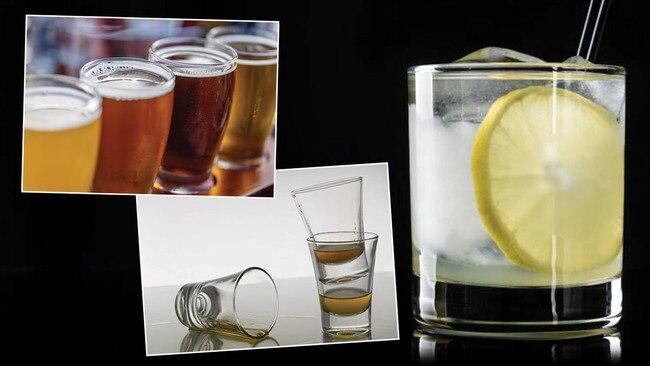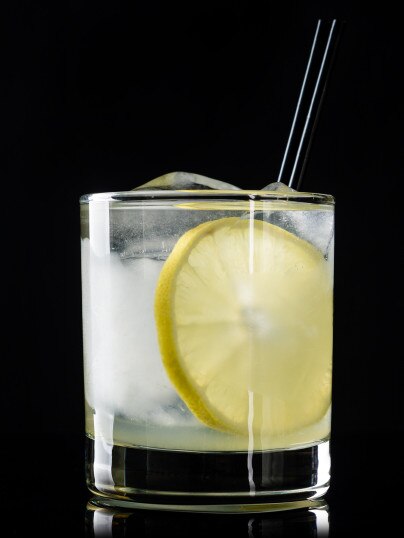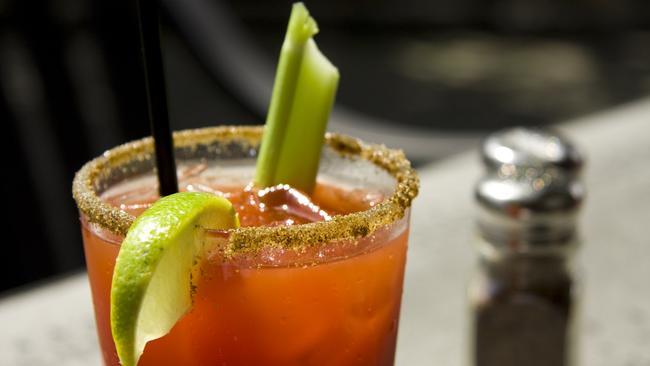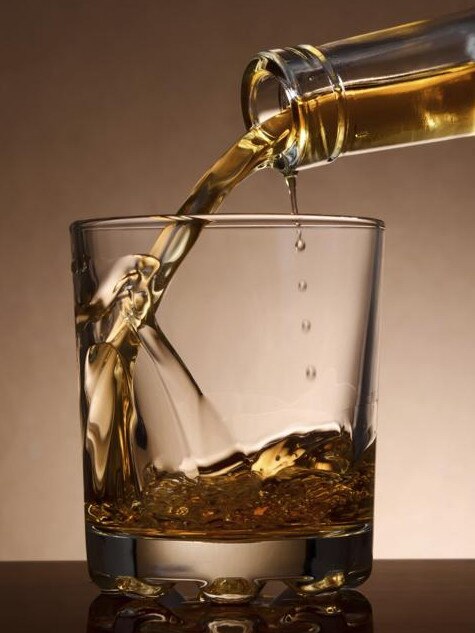Choose your poison: What your drink of choice is doing to you
Vodka is better than wine, right? And vitamin C makes Bloody Marys good for you? How does your tipple measure up?

So here we are, more than halfway through Lockdown 2, and if we ever had a healthy halo it has probably slipped. Deprived of holidays, socialising, sport and shopping, Britons are slipping into bad habits, spending more money on alcohol to drink our way through the boredom and the gloom. In a survey by the Royal College of Psychiatrists only 18 to 24-year-olds were found to be drinking less during lockdown; the rest of us are hitting the bottle harder than before.
We all know that we should stay below the upper limit of 14 units a week — that’s just seven medium-size glasses of wine — and yet figures from Public Health England show that a fifth of those aged 45 to 74 have been drinking far in excess of that, with an average consumption of 21 units. Affluent younger pensioners are spending their savings on drink, according to a report by the Royal College of Psychiatrists last week, and an analysis by We Are With You, a drug, alcohol and mental health charity, warned that the over-50s are embracing the unhealthy holy trinity of earlier drinking, more regular drinking and, for one fifth of that age group, binge drinking to see them through to spring.
Of course, too much alcohol is never good news for your health.
“Ignore the myths about your body processing different alcoholic drinks in different ways,” says Ian Marber, a nutritionist. “Your liver doesn’t recognise wine from beer from a gin and tonic, or a bottle of cheap plonk from a bottle of Chateau Lafite — it processes all alcohol the same.” But reining in the excess and applying damage-limitation strategies might mean we can indulge for a little longer. “If you can stick within the units, there are ways to enjoy alcohol in moderation,” says Eve Kalinik, a nutritional therapist. Here’s how.

RED WINE
The good news
Although it generally contains slightly more calories than white, it remains a better choice because the antioxidant chemicals polyphenols, including resveratrol, present in the skin and leaves of plants, are particularly abundant in red grapes. Last year a study at King’s College London found that red-wine drinkers had better gut microbiota diversity (a sign of good gut health) compared with non red-wine drinkers, and also had lower levels of obesity and “bad” cholesterol. “If you must choose one alcoholic drink today (Tuesday), red wine is the one to pick as it seems to potentially exert a beneficial effect on you and your gut microbe,” says Dr Caroline Le Roy, the lead author of the paper. Marber says that “up to three glasses of red a week might offer some protection to the brain and to the heart”. Red wine is also usually slightly lower in sugar than white.
The bad news
It could give you a banging headache. “Red wine contains higher levels of congeners, by-products of the fermenting process, which may make the hangover worse,” says Dominique Ludwig, a nutritionist. And while a little might help to maintain cognitive health, “more than a moderate consumption of red wine will gradually reduce the brain’s capacity to store new memories”, Marber says.
Calories: 160 per medium glass (175ml)
Units: 2.3 per medium glass (175ml)
How best to drink it
“Resveratrol, the potent polyphenol, is found in particularly high concentrations in pinot noir from cooler winegrowing regions such as Bordeaux and Oregon, so they might be the best choices,” Marber says. If you can, drink after eating. In a study at Glasgow Caledonian University, drinking a couple of glasses of cabernet sauvignon/shiraz 20 minutes before a two-course meal, or 125ml of red wine with the starter and 250ml of red wine with the main course resulted in up to 25 per cent more calories being consumed from food compared with a control group who drank no wine. Researchers said that the effects of the red wine on appetite “are immediate and stimulate food intake early in the meal”.
Don’t overdo it. In her study, Le Roy found that “drinking red wine rarely, such as once every two weeks, seems to be enough” to boost the microbiome. “Drinking more than six medium 175ml glasses of 13 per cent ABV [alcohol by volume] wine in a week will take you over the government’s low-risk drinking guidelines,” Marber says.

WHITE WINE
The good news
Although it contains considerably fewer beneficial polyphenols than red wine, “white wine has its fair share of antioxidants”, Kalinik says.
The bad news
Remember, all wine is made from the fermented juice of grapes that contain about 16g of sugar in every 100g, so it’s never going to be good for the waistline. “And there’s evidence that white wines are easier to drink than red or bubbly, which can lead to us consuming more than we intended,” Ludwig says.
Calories: 155 per medium glass (175ml).
Units: 2.3 per medium glass (175ml).
How best to drink it
Dry wines have a lower sugar content because some of the sugar is converted to alcohol during fermentation, and lighter white wines, such as riesling, pinot grigio and vinho verde, are a slightly better choice if you are watching your waistline than those with a total higher ABV, such as chardonnay, sauvignon blanc and viognier. Cut the calories in half by making a 50-50 white wine spritzer with sparkling water and lots of ice.
A 2018 study found that an aged white wine has more heart-healthy benefits than gin. Organic wines aren’t worth the expense, and there’s no evidence that they prevent a hangover. While the grapes in organic wine must be grown without pesticides, herbicides and fertilisers, the wine itself can contain additives. “Even chemical sulfites can be added as a preservative and stabiliser during production, and only a wine labelled as 100 per cent organic is guaranteed to be sulfite-free,” Kalinik says. “Most organic wines are not as pure as you might think.”

VODKA, LIME AND SODA
The good news
It’s relatively low in calories, provided that you choose carefully.
The bad news
Any alcohol slows the breakdown of fat in the body, potentially reducing the amount of fat your body burns for energy. One study showed that just two drinks of vodka and diet lemonade temporarily derailed fat oxidation by more than 70 per cent.
Calories: A 25ml measure of 40 per cent ABV vodka contains 55 calories with a no-calorie soda water and lime. Mix with sugary lemonade and it shoots up to 110 calories.
Units: A 25ml measure of 40 per cent ABV vodka provides one unit.
How best to drink it
Avoid vodka shots, or vodka jellies — they are too easy to overconsume — but also using as vodka mixers taurine-containing energy drinks, such as Red Bull — a study showed that they impair judgment and increase the tendency for people to get violent. Pre-mixed drinks are a no-no. A product survey by Action on Sugar conducted in January at Queen Mary University of London revealed that a 250ml can of Asda Vodka, Lime and Lemonade contained three teaspoons of sugar, and a 250ml Tesco Triple Distilled Vodka With Lime and Lemonade contained 73 calories. “Mix vodka with a zero-calorie soda or mineral water and a twist of fresh lime with lots of ice for the lowest calorie option,” Kalinik says.
GIN AND TONIC
The good news
“Gin is low in sugar, and a single measure on the rocks contains about 50 calories,” Ludwig says.
The bad news

It can make you loutish and emotional. A study by Public Health Wales and King’s College London that was published in the journal BMJ Open found that 30 per cent of spirit drinkers reported feeling aggressive after drinking gin, vodka or rum and that spirits were more likely to result in drinkers feeling tearful.
Calories: A single G&T of 25ml of 37.5 per cent ABV gin and regular tonic water contains 97 calories.
Units: 1 unit per single serving made with 25ml of 37.5 per cent ABV gin.
How best to drink it
“It is the mixers that are the problem as they can add one to three teaspoons of sugar to your glass, so choose wisely,” Ludwig says. Some fashionable lower-sugar tonics are sweetened with fructose, which is sweeter than sugar, so less of it is used to achieve the same taste. “But these are still not sugar-free and can still add one to two teaspoons of sugar to your tipple, so read the labels,” Ludwig says. Cut out the added sugars of regular tonic water by opting for a slimline version will save you an average of 55 calories a glass. Add some berries, cucumber or fresh mint for an antioxidant boost. And avoid the pre-mixed versions. In the Action on Sugar survey in January a 250ml can of Classic Combinations Pink Gin and Tonic was found to contain seven teaspoons of sugar and 178 calories, and even a 250ml can of Sipsmith London Dry Gin and Light Tonic provided a teaspoon of sugar and 118 calories.

BUBBLES
The good news
Champagne has fewer calories than white wine, and a study from the University of Reading found that drinking one to three glasses a week may counteract the memory loss associated with ageing. The bubbles may produce a mini probiotic boost.
The bad news
All sparkling wines contain sugar, which is needed for the fermentation process that creates the bubbles. “Sparkling drinks are also thought to speed up the rate of alcohol absorption into the bloodstream, so you will feel drunk more quickly,” Ludwig says.
Calories: 105 per 125ml of champagne; 108 per 125ml of prosecco.
Units: 1.5 per 125ml flute of champagne or prosecco.
How best to drink it
“Brut champagne contains the least amount of sugar – about half a teaspoon per flute – while prosecco has less than a teaspoon,” Ludwig says. “Demi-sec champagne normally contains double the sugar content of brut or extra brut.”
Try making a champagne cocktail by adding orange or grapefruit juice and you will add a small amount of vitamin C (although you won’t necessarily save calories). “Remember that champagne flutes are usually smaller than wine glasses, so you might drink less volume,” Ludwig says. “Also, very fizzy drinks are less easy to gulp down.”

BLOODY MARY
The good news
Containing vodka and tomato juice combined with Worcestershire sauce, Tabasco and salt, it does have some nutritive value. “It’s a case of detox-retox in a glass,” Ludwig says. “The tomato juice will be rich in lycopene — a powerful antioxidant found in cooked tomatoes — and other nutrients that are beneficial to health.”
The bad news
“You can kid yourself that you are getting a lycopene kick from the tomato juice, but it would be better to get that without the alcohol,” Marber says.
Calories: 80 calories if made with a 25ml single shot of 40 per cent ABV vodka.
Units: 1 unit if made with a 25ml single shot of 40 per cent ABV vodka.
How best to drink it
Make it fresh — pre-mixed versions can be loaded with sodium. A good-quality tomato juice will provide some antioxidants, mainly lycopene as well as vitamin C and potassium, but you can also blend in some lime juice. Add vegetables — such as blended cucumber, and serve with a celery stalk — and some herbs for added nutrients and fibre.
WHISKY
The good news
Good for dieters. A single shot of whisky has zero carbs and zero fat and is relatively low in calories.
The bad news

“Along with brandy and rum, the trouble with whisky is that it is high in congeners, produced as by-products of fermentation or distilling,” Ludwig says. “Congeners are thought to slow down the breakdown of alcohol in the body by competing with it for detoxification.” This means, she says, that the alcohol and congeners stay in the body for longer and a hangover is more likely. And while warm, non-alcoholic drinks might be helpful in soothing symptoms of a cold, there’s no hard evidence that a hot toddy – a mixture of hot water, honey, lemon and whisky – will work as a tonic.
Calories: 55.5 in a single shot of 40 per cent ABV whisky.
Units: 1 in a single shot of 40 per cent ABV whisky.
How best to drink it
Drinkaware, an independent charity working to reduce alcohol misuse and harm in the UK, says that adding a mixer to a 25ml measure means that you consume 117 calories, about the same as a hot cross bun. Opt for a single malt. Several years ago researchers from the Rowett Research Institute in Aberdeen asked a group of men to abstain from eating after 11pm and to drink either 100ml of Cape Bay mellow red wine, a 12-year-old malt whisky matured in oak, or a “new make” spirit – a newly distilled and non-matured whisky the next morning. They repeated once a week until they had each tried every drink. When they measured blood antioxidant levels in the men, the researchers reported in the European Journal of Clinical Nutrition that drinking the single malt led to a greater concentration of beneficial polyphenol chemicals. The downside? Only one drink a week was needed to produce the effects, so more is not necessarily better.

BEER
The good news
A review in the journal Nutrition, Metabolism and Cardiovascular Diseases suggested that “moderate” beer drinkers — men who drink up to two 330ml bottles of beer a day and women who drink one — could see benefits for their heart health. A study involving 80,000 participants presented to the American Heart Association’s scientific conference found that those who drank moderate amounts of beer had a slower decrease in “good” HDL cholesterol, and therefore a lower risk of cardiovascular diseases.
Depending on the hops used to make it, beer provides small amounts of potassium and B vitamins. “There will be some fibre and some antioxidant polyphenols that can help protect against free-radical damage to the body,” Kalinik says.
The bad news
It’s a nightmare for the belly. Beer is high in carbs, calories (gram for gram it contains as many as a fizzy soft drink) and alcohol, but low in even the nutrients it does contain. There’s evidence that drinking beer is associated with an increase in the calories eaten from food and slows the body’s ability to burn fat. A high intake has been shown to cause abdominal obesity — a beer belly to you and me.
Calories: 142 in a 330ml, 5 per cent ABV bottle; 181 calories in a pint of 4 per cent ABV beer.
Units: 1.7 in a 330ml, 5 per cent ABV bottle; 2.3 in a pint of 4 per cent ABV beer.
How best to drink it
Avoid ale or stout because a pint with 5 per cent ABV can contain more than 250 calories, the same amount as a bagel. Craft beers often have a marginally higher ABV than traditional beers – and the higher the ABV, the higher the alcohol content, and typically the higher the calorie count. Offset some of the harmful effects with exercise. A study in the British Journal of Sports Medicine found that moderate beer drinkers who met or exceeded the physical activity guidelines of 150 minutes of moderate to vigorous intensity a week cut their risk of death from any cause and death from cancer, suggesting that exercise offsets some of the negative effects of alcohol. (Calorie contents from drinkaware.co.uk)
The Times







To join the conversation, please log in. Don't have an account? Register
Join the conversation, you are commenting as Logout